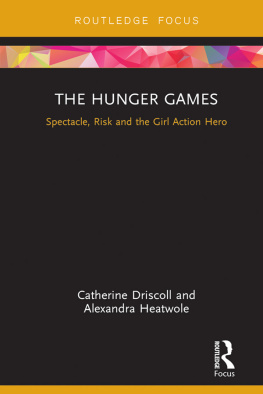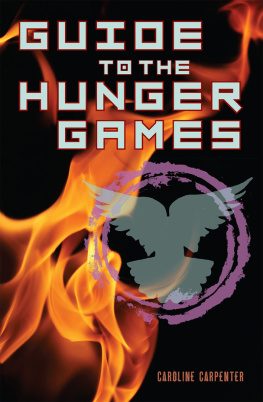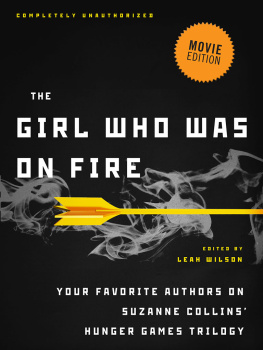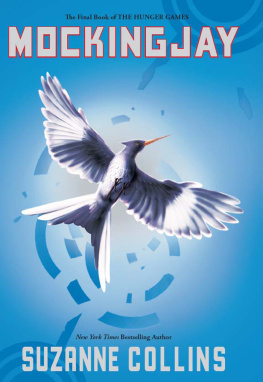The Hunger Games
The 2012 film The Hunger Games and its three sequels, appearing quickly over the following three years, represent one of the most successful examples of the contemporary popularity of youth-oriented speculative film and television series. This book considers The Hunger Games as an intertextual field centred on this blockbuster film franchise but also encompassing the successful novels that preceded them and the merchandised imagery and the critical and fan discourse that surrounds them. It explores the place of The Hunger Games in the history of youth-oriented cinema; in the history of speculative fiction centred on adolescents; in a network of continually evolving and tightly connected popular genres; and in the popular history of changing ideas about girlhood from which a successful action hero like Katniss Everdeen could emerge.
Catherine Driscoll is Professor of Gender and Cultural Studies at the University of Sydney. Her research focuses on youth and girl culture, popular culture, modernity, and rural cultural studies. She is also author of Girls, Modernist Cultural Studies, Teen Film, and The Australian Country Girl.
Alexandra Heatwole is a researcher in media and gender studies, specialising in girl studies, youth culture, speculative fictions, and sexuality and reproductive technology. Since her doctorate, Renegotiating the Heroine: Postfeminism on the Speculative Screen (Sydney, 2015), she has published on princess culture and girl heroes.
Cinema and Youth Cultures
Series Editors: Sin Lincoln & Yannis Tzioumakis
Cinema and Youth Cultures engages with well-known youth films from American cinema as well the cinemas of other countries. Using a variety of methodological and critical approaches the series volumes provide informed accounts of how young people have been represented in film, while also exploring the ways in which young people engage with films made for and about them. In doing this, the Cinema and Youth Cultures series contributes to important and longstanding debates about youth cultures, how these are mobilised and articulated in influential film texts and the impact that these texts have had on popular culture at large.
Clueless
Lesley K. Speed
Grease
Barbara Jane Brickman
Boyhood
Timothy Shary
Easy A
Betty Kaklamanidou
The Hunger Games
Catherine Driscoll and Alexandra Heatwole
LAuberge Espagnole
Ben McCann
For more information about this series, please visit: www.routledge.com/Cinema-and-Youth-Cultures/book-series/CYC
The Hunger Games
Spectacle, Risk and the Girl Action Hero
Catherine Driscoll and Alexandra Heatwole

First published 2018
by Routledge
2 Park Square, Milton Park, Abingdon, Oxon OX14 4RN
and by Routledge
711 Third Avenue, New York, NY 10017
Routledge is an imprint of the Taylor & Francis Group, an informa business
2018 Catherine Driscoll and Alexandra Heatwole
The right of Catherine Driscoll and Alexandra Heatwole to be identified as authors of this work has been asserted by them in accordance with sections 77 and 78 of the Copyright, Designs and Patents Act 1988.
All rights reserved. No part of this book may be reprinted or reproduced or utilised in any form or by any electronic, mechanical, or other means, now known or hereafter invented, including photocopying and recording, or in any information storage or retrieval system, without permission in writing from the publishers.
Trademark notice: Product or corporate names may be trademarks or registered trademarks, and are used only for identification and explanation without intent to infringe.
British Library Cataloguing-in-Publication Data
A catalogue record for this book is available from the British Library
Library of Congress Cataloging-in-Publication Data
A catalog record for this book has been requested
ISBN: 978-1-138-68306-8 (hbk)
ISBN: 978-1-315-54475-5 (ebk)
Typeset in Times New Roman
by Apex CoVantage, LLC
For Ruth,
and for Norma and Jim
Contents
Despite the high visibility of youth films in the global media marketplace, especially since the 1980s when Conglomerate Hollywood realised that such films were not only strong box-office performers but also the starting point for ancillary sales in other media markets as well as for franchise building, academic studies that focused specifically on such films were slow to materialise. Arguably the most important factor behind academias reluctance to engage with youth films was a (then) widespread perception within the Film and Media Studies communities that such films held little cultural value and significance, and therefore were not worthy of serious scholarly research and examination. Just like the young subjects they represented, whose interests and cultural practices have been routinely deemed transitional and transitory, so were the films that represented them perceived as fleeting and easily digestible, destined to be forgotten quickly, as soon as the next youth film arrived in cinema screens a week later.
Under these circumstances, and despite a small number of pioneering studies in the 1980s and early 1990s, the field of youth film studies did not really start blossoming and attracting significant scholarly attention until the 2000s and in combination with similar developments in cognate areas such as girl studies. However, because of the paucity of material in the previous decades, the majority of these new studies in the 2000s focused primarily on charting the field and therefore steered clear of long, in-depth examinations of youth films or was exemplified by edited collections that chose particular films to highlight certain issues to the detriment of others. In other words, despite providing often wonderfully rich accounts of youth cultures as these have been captured by key films, these studies could not have possibly dedicate sufficient space to engage with more than just a few key aspects of youth films.
In more recent (post-2010) years, a number of academic studies started delimiting their focus and therefore providing more space for in-depth examinations of key types of youth films, such as slasher films and biker films, or examining youth films in particular historical periods. From that point on, it was a matter of time for the first publications that focused exclusively on key youth films from a number of perspectives to appear (Mamma Mia! The Movie, Twilight and Dirty Dancing are among the first films to receive this treatment). Conceived primarily as edited collections, these studies provided a multifaceted analysis of these films, focusing on such issues as the politics of representing youth, the stylistic and narrative choices that characterise these films, and the extent to which they are representative of a youth cinema, the ways these films address their audiences, the ways youth audiences engage with these films, the films industrial location, and other relevant issues.
It is within this increasingly maturing and expanding academic environment that the














